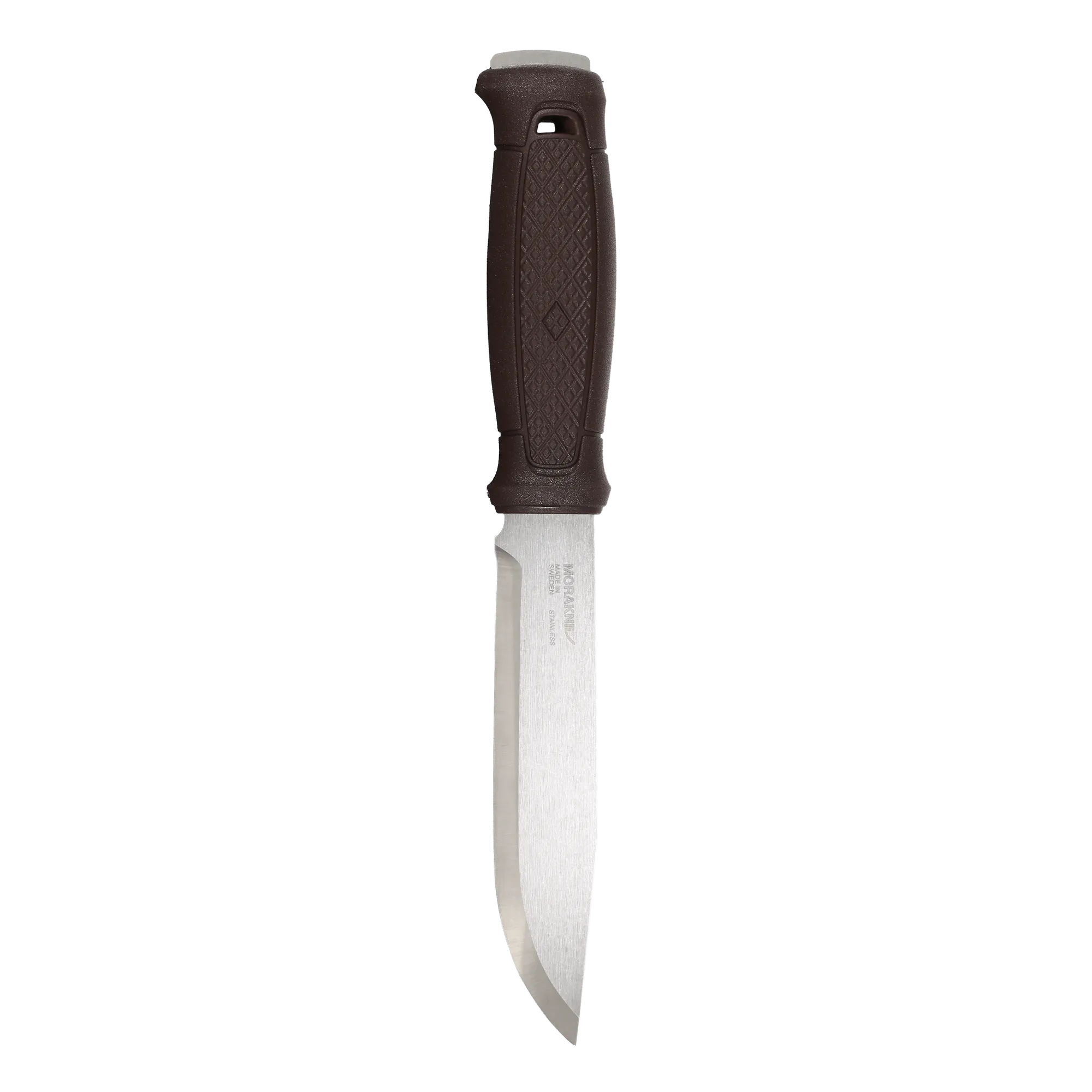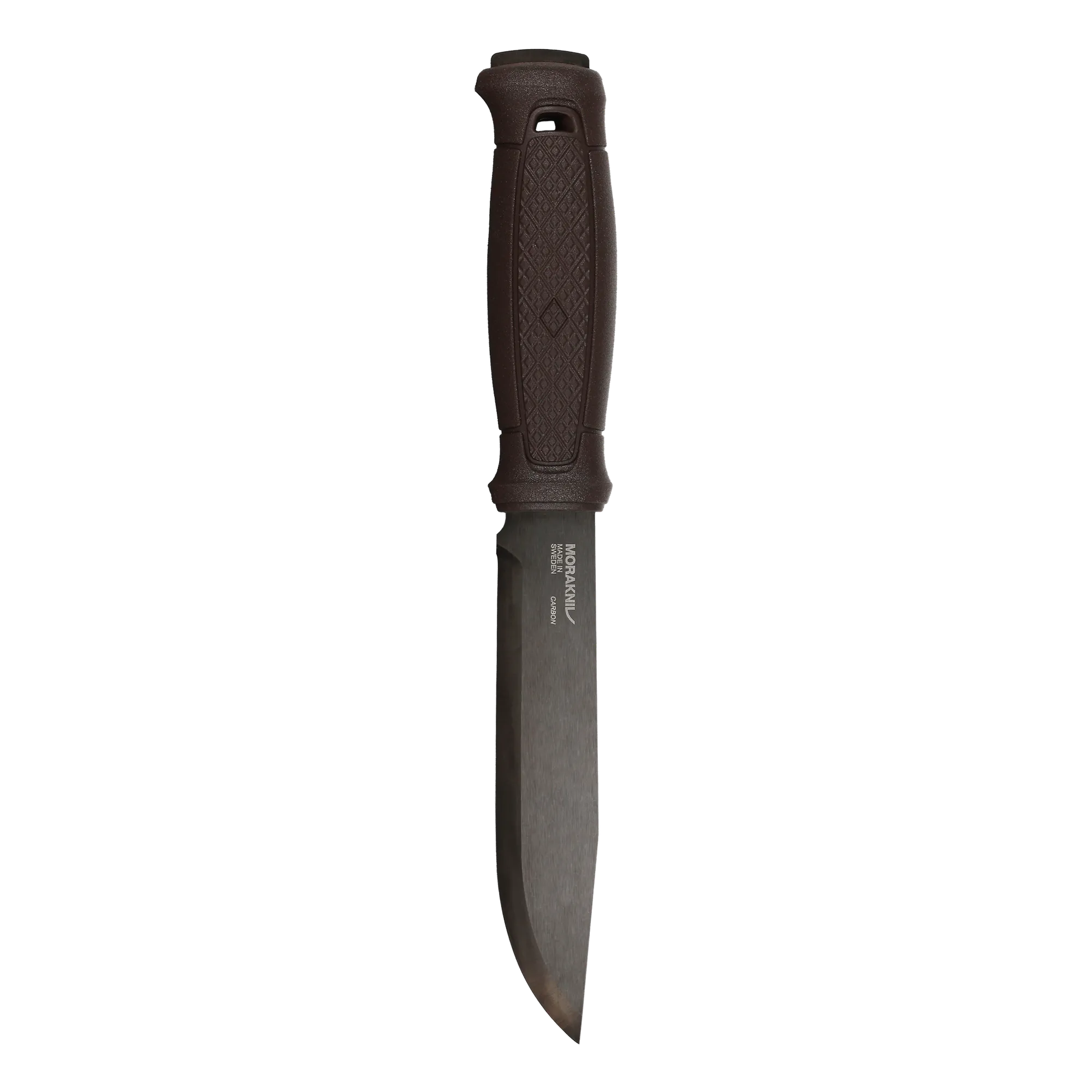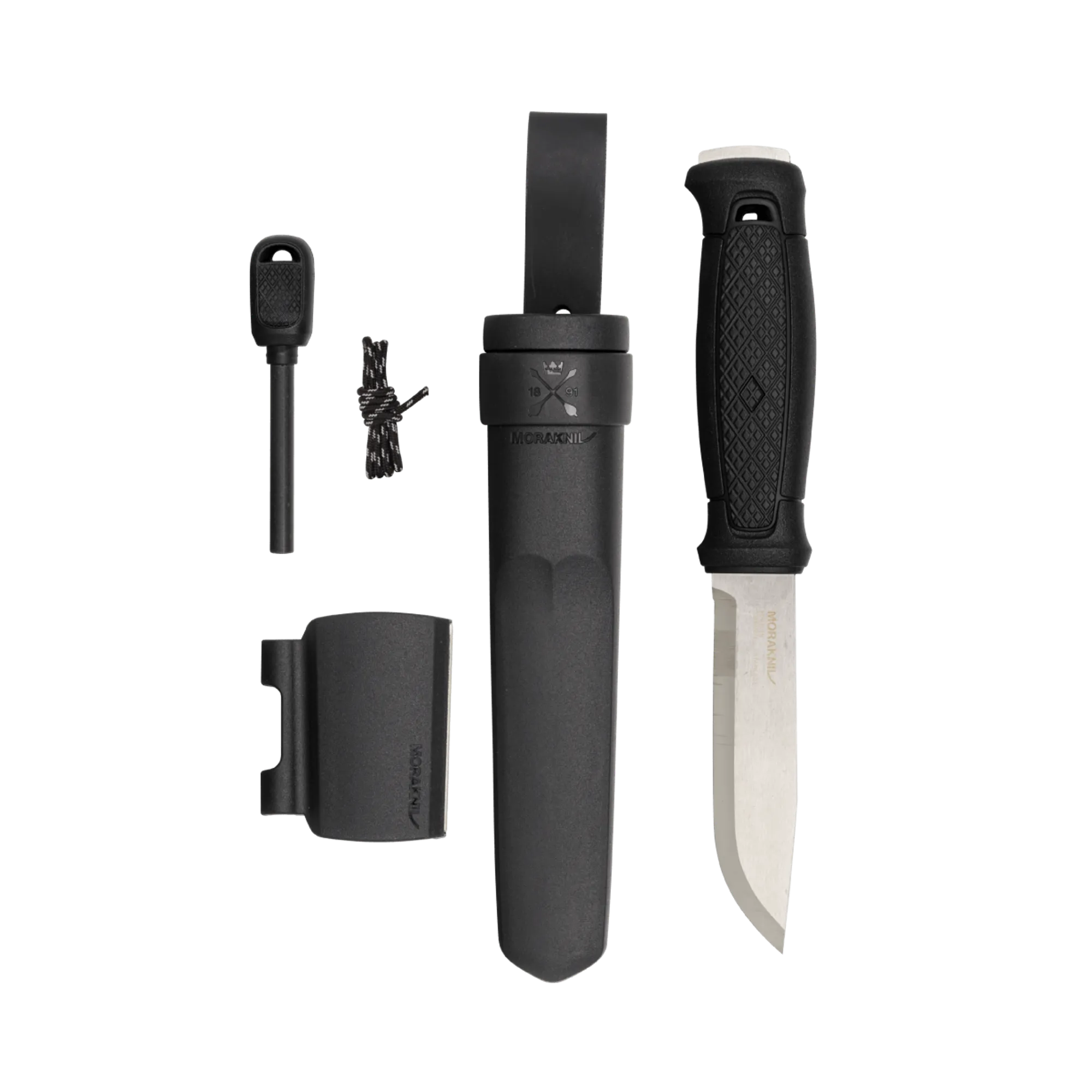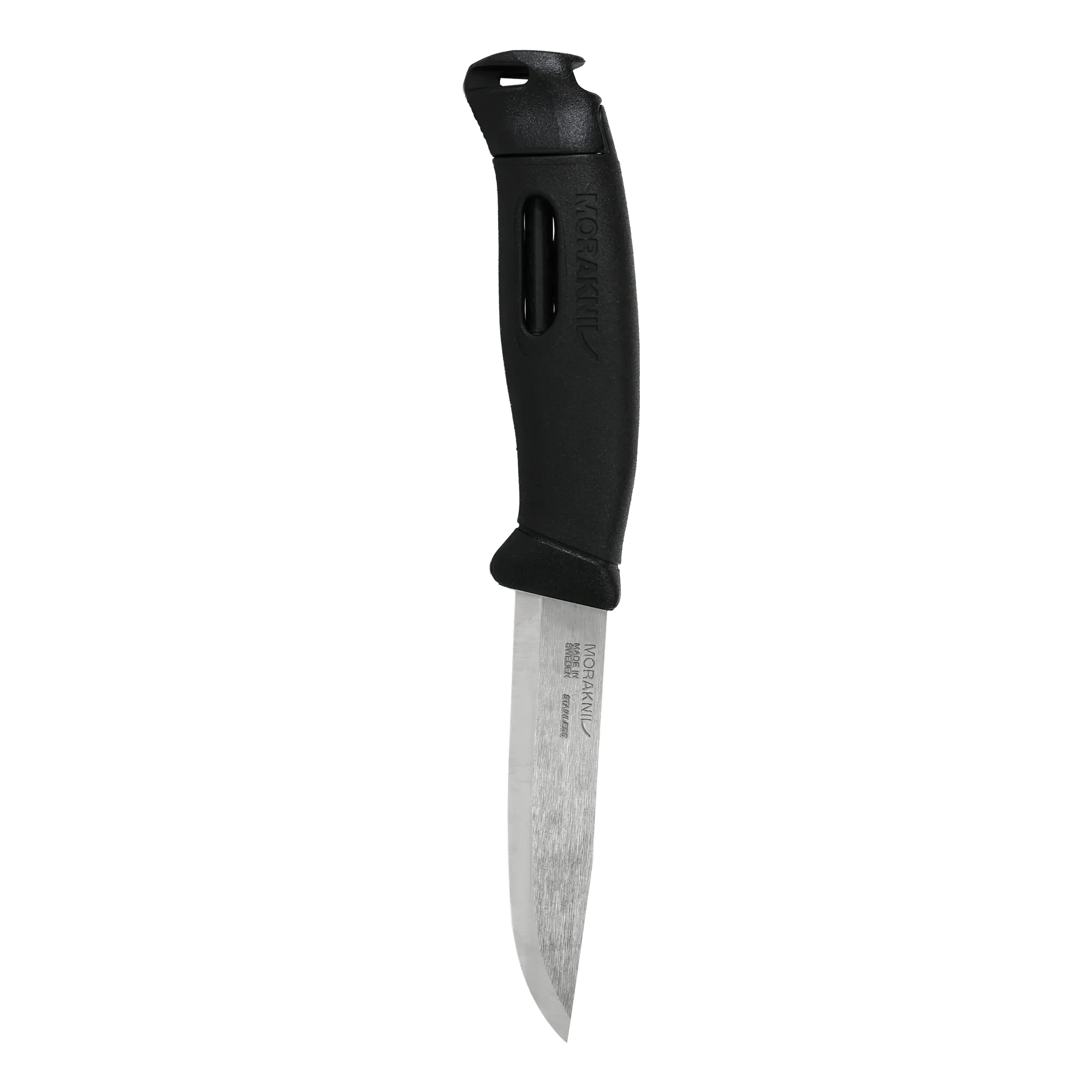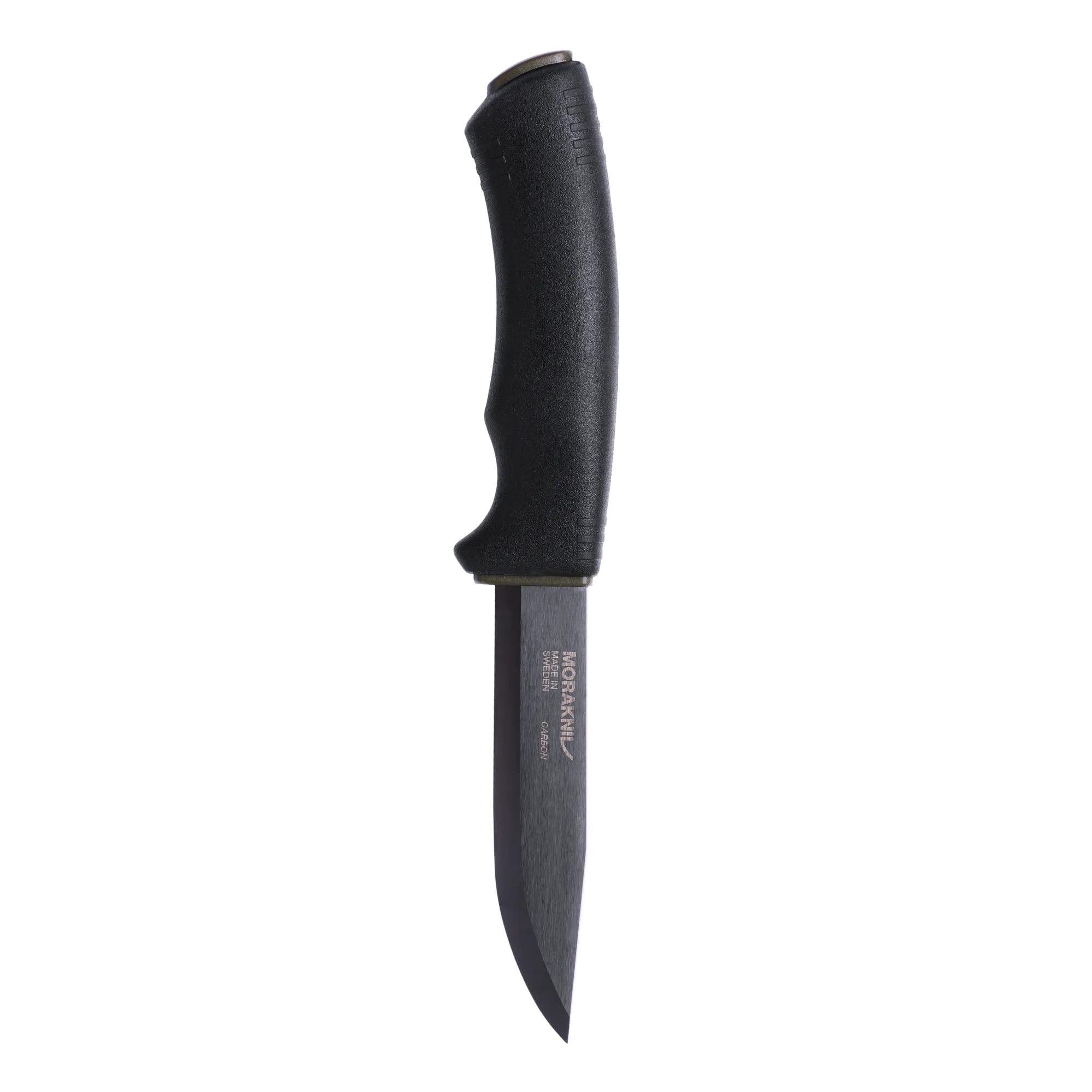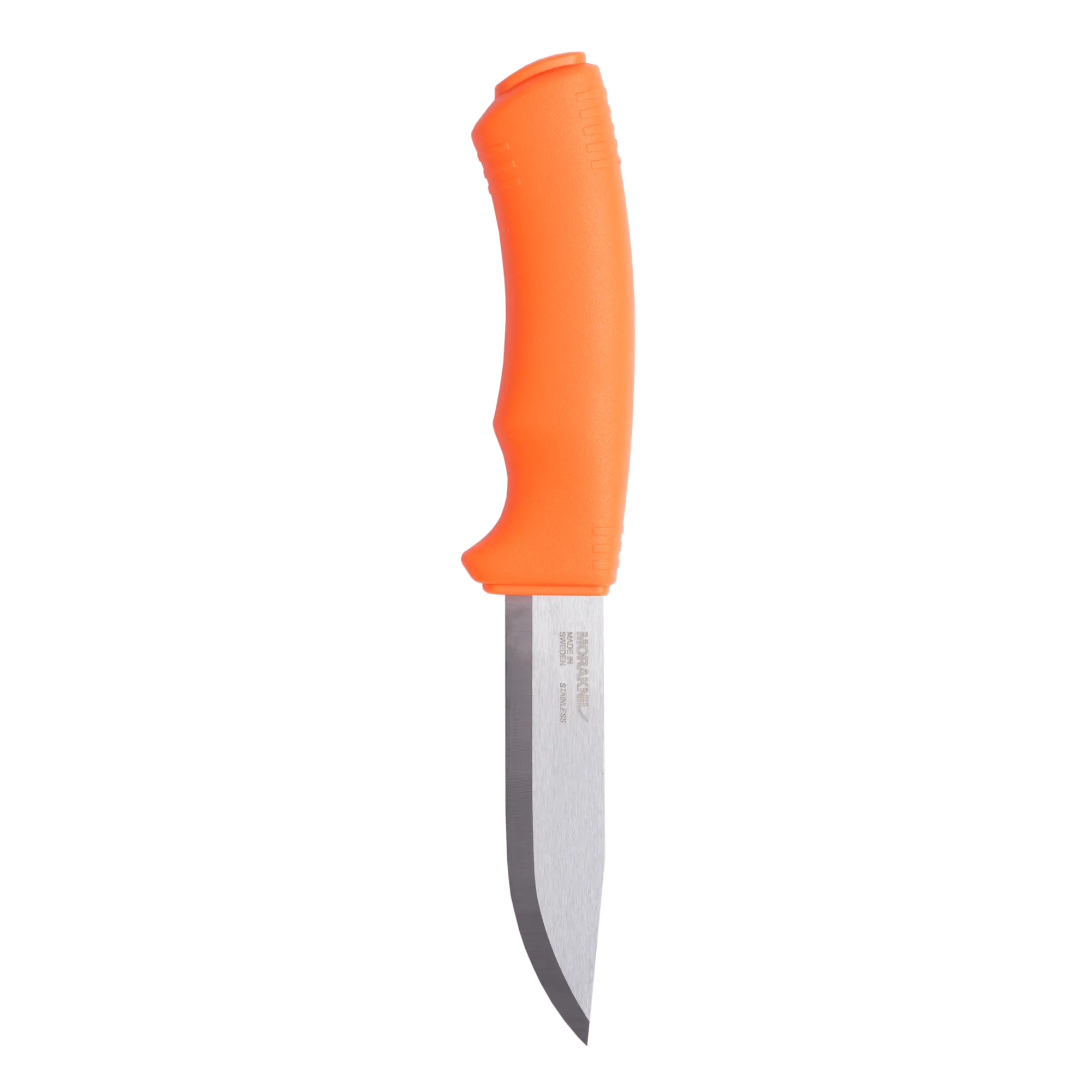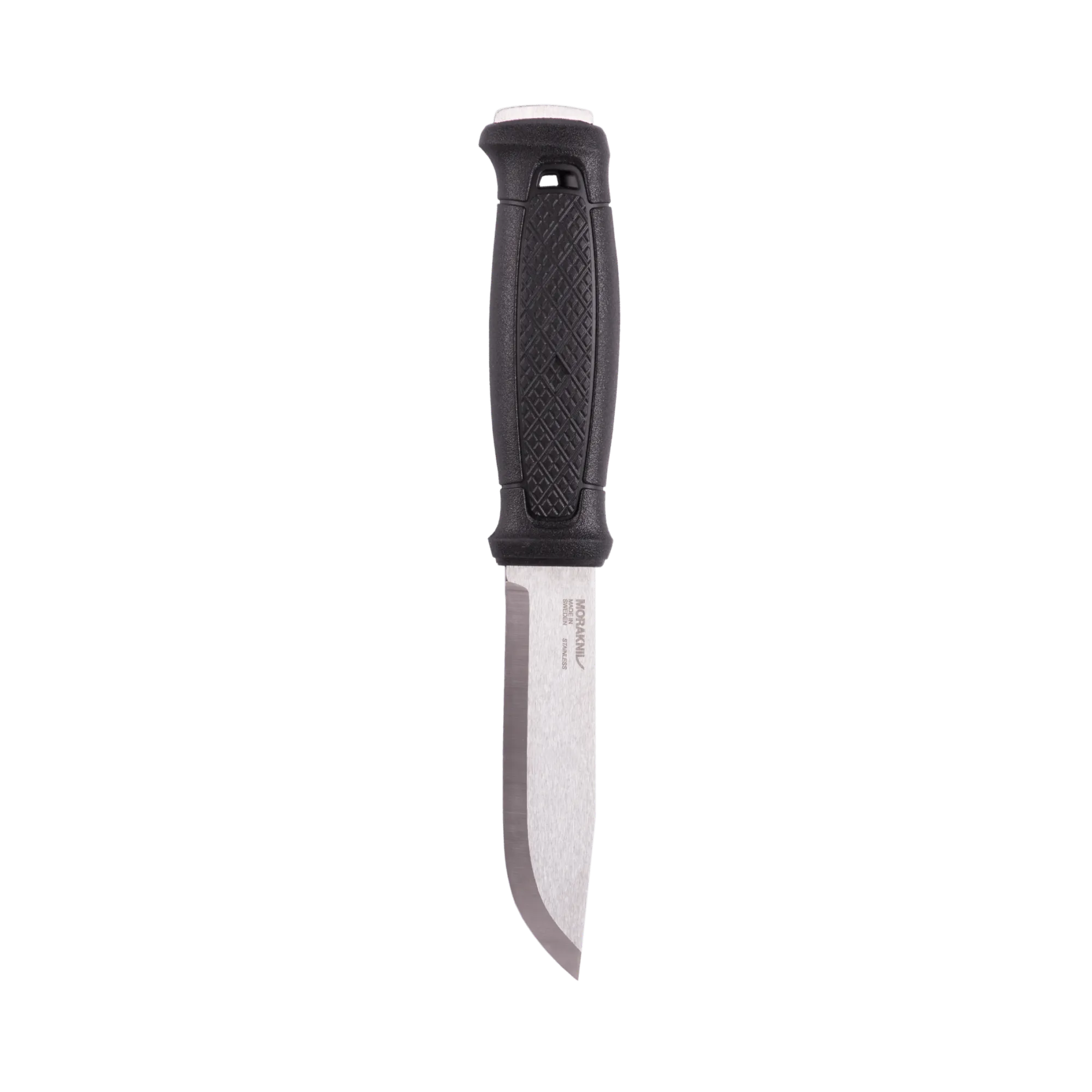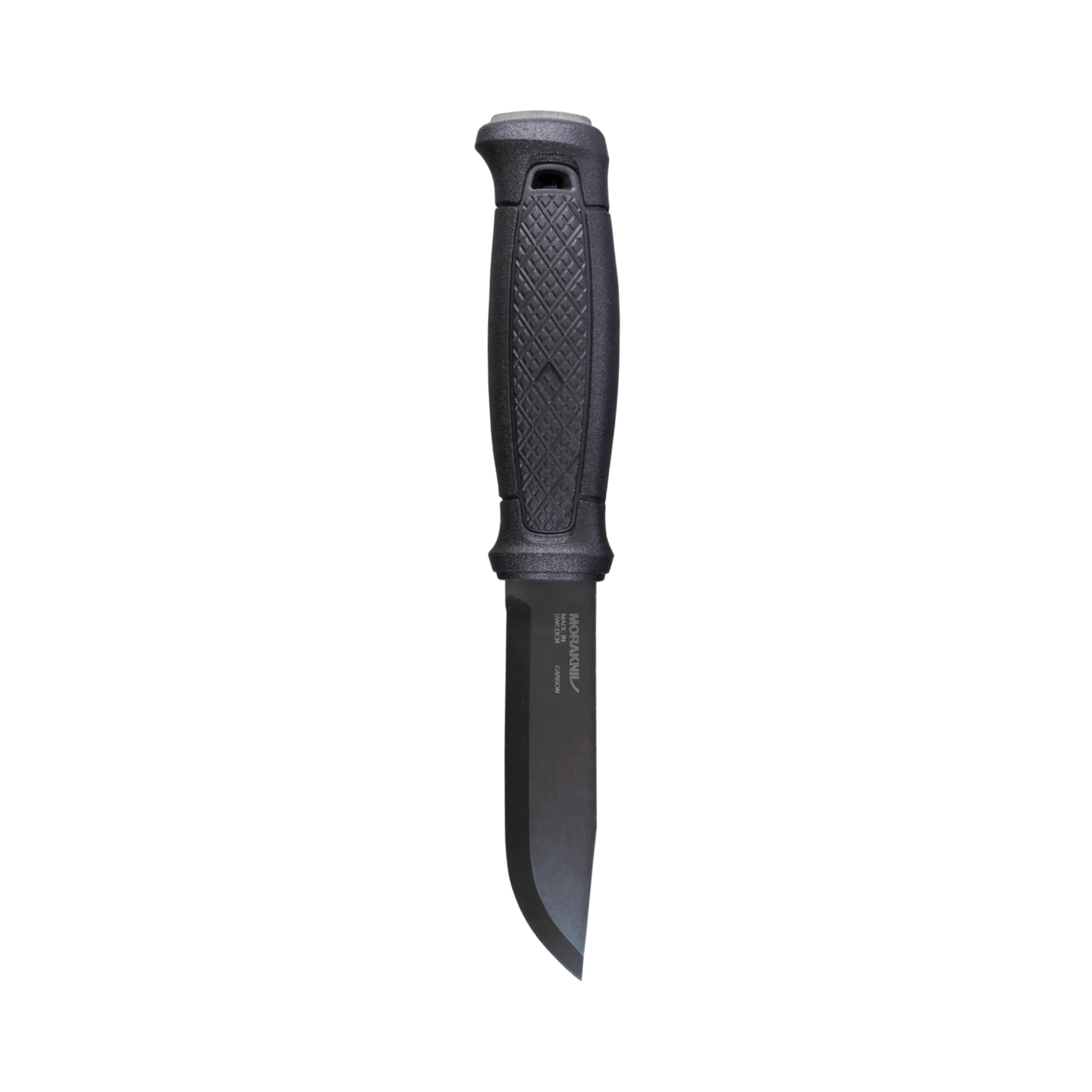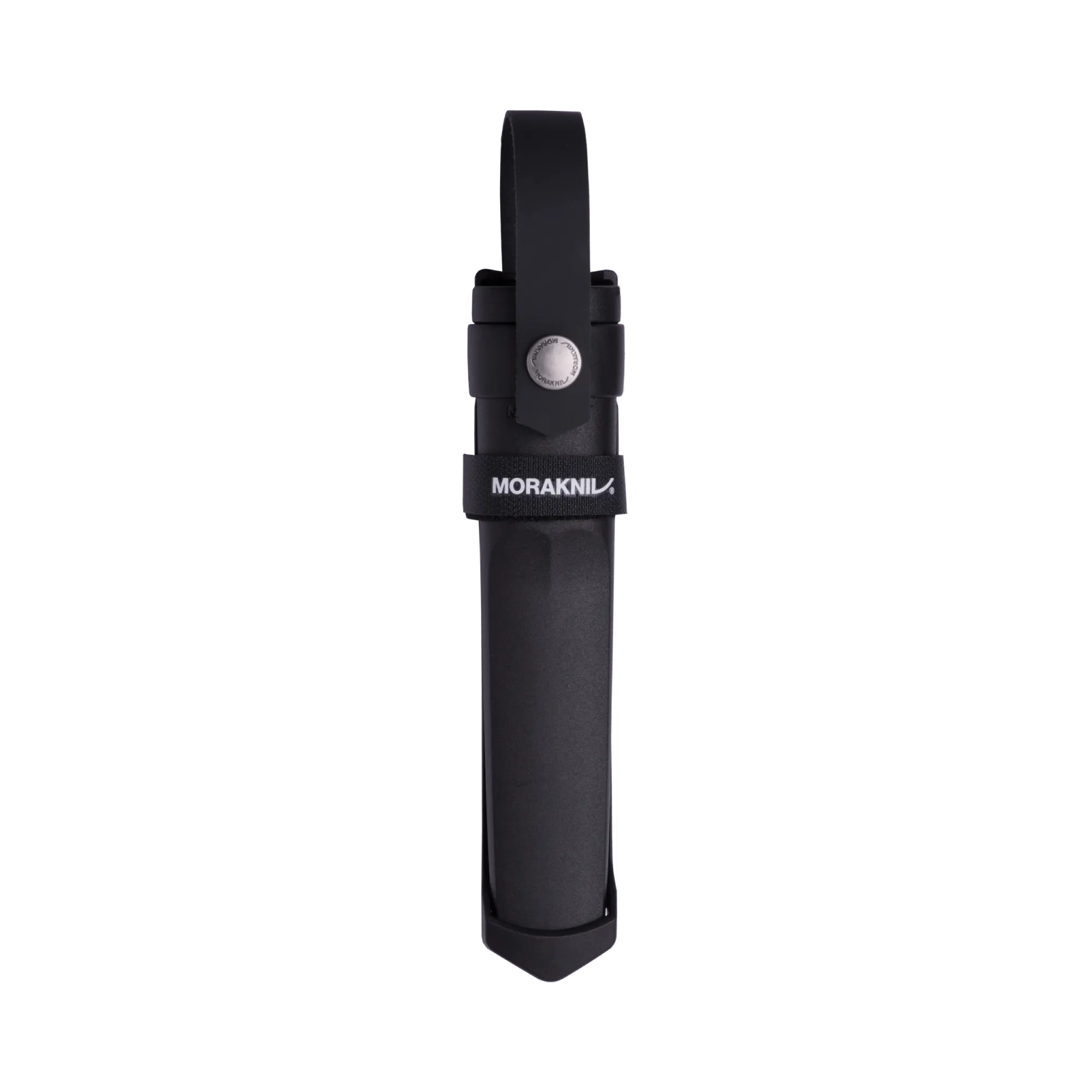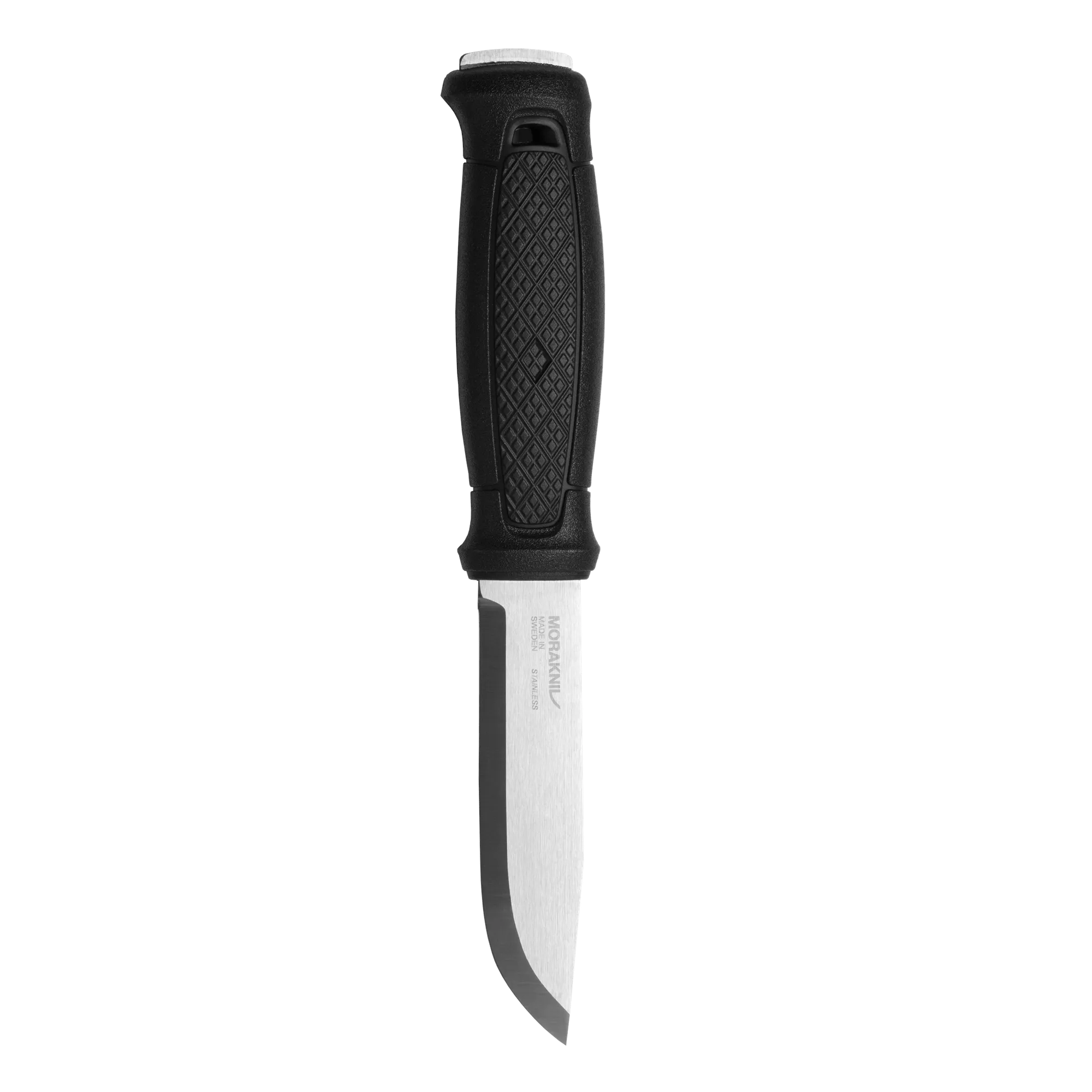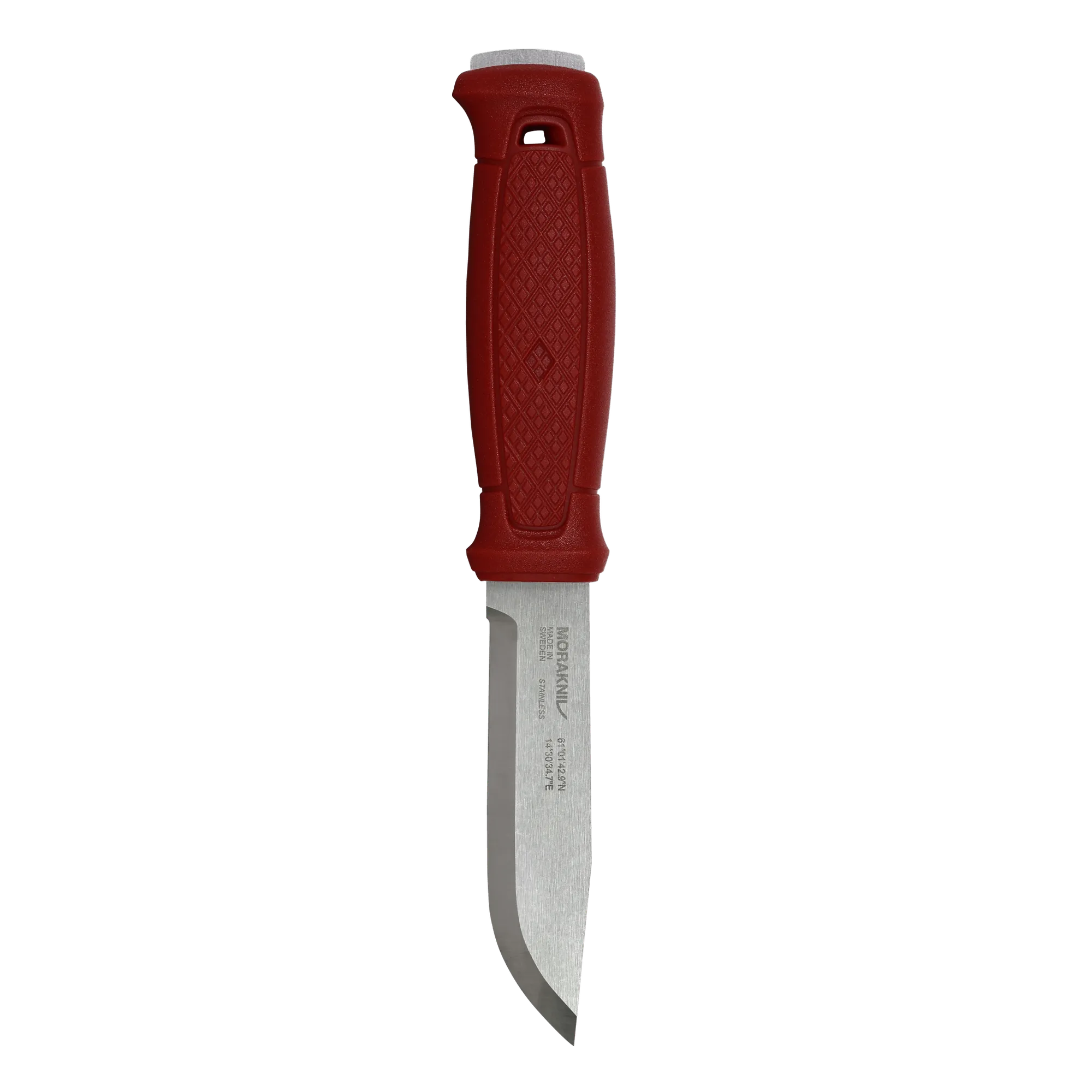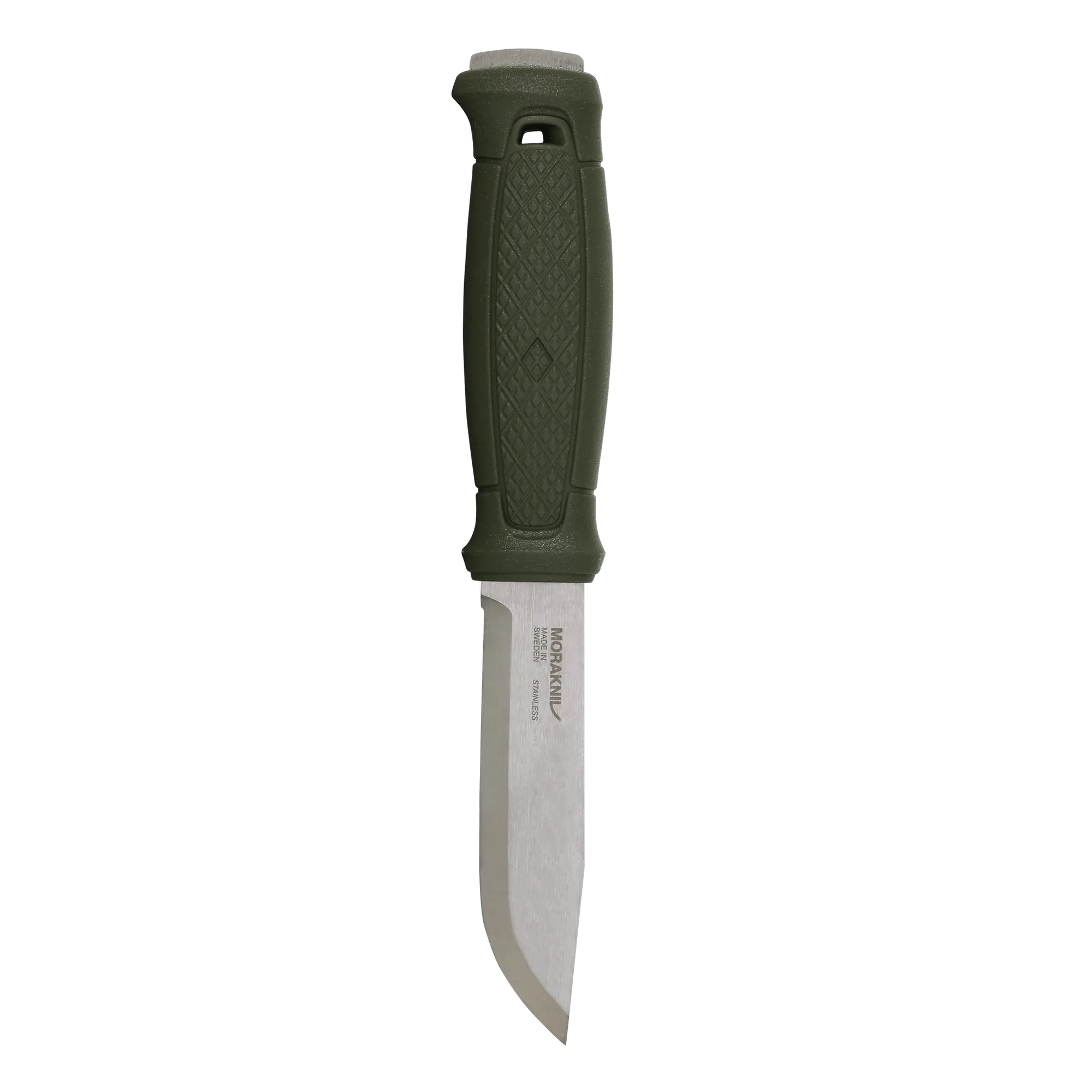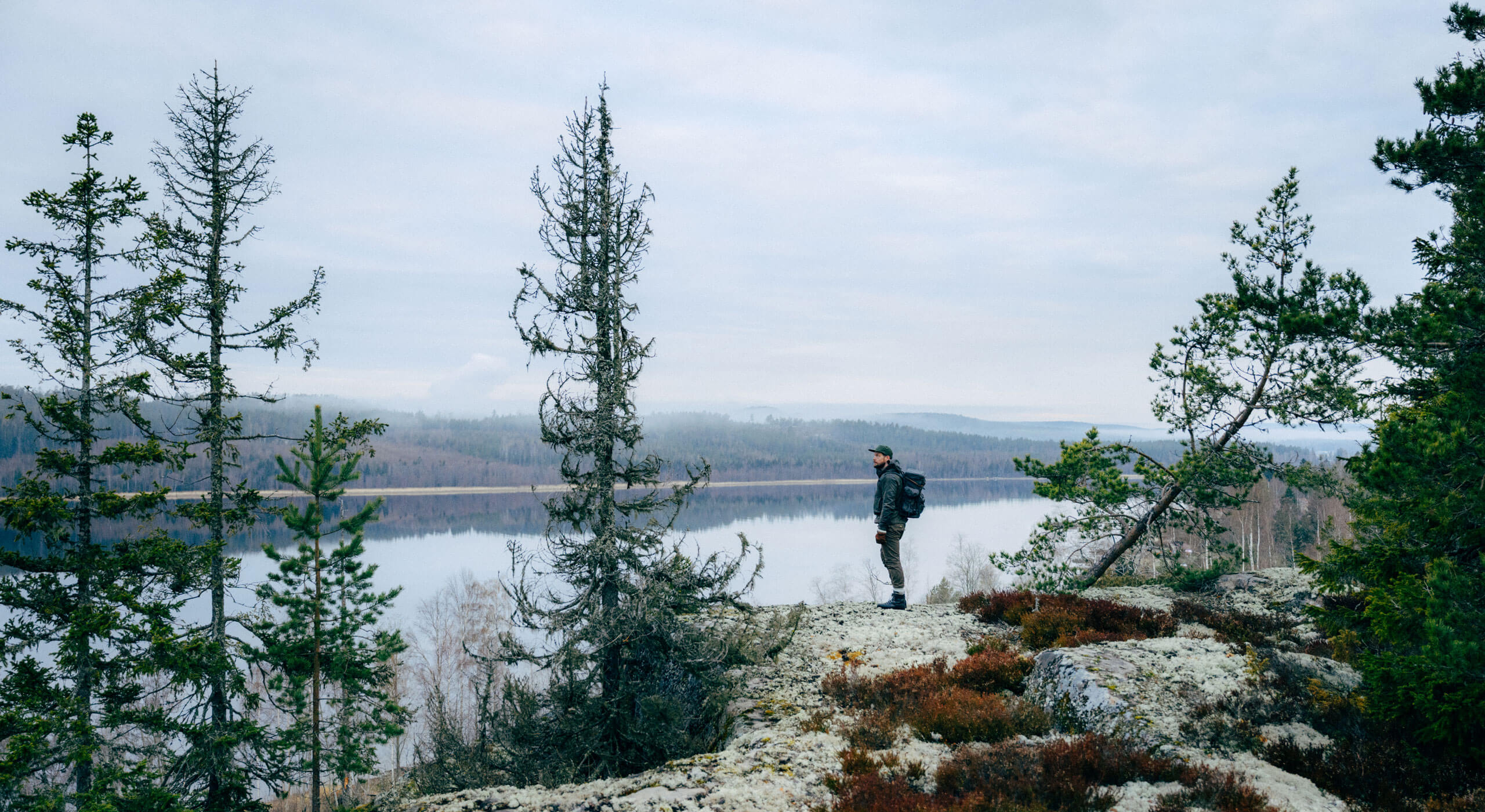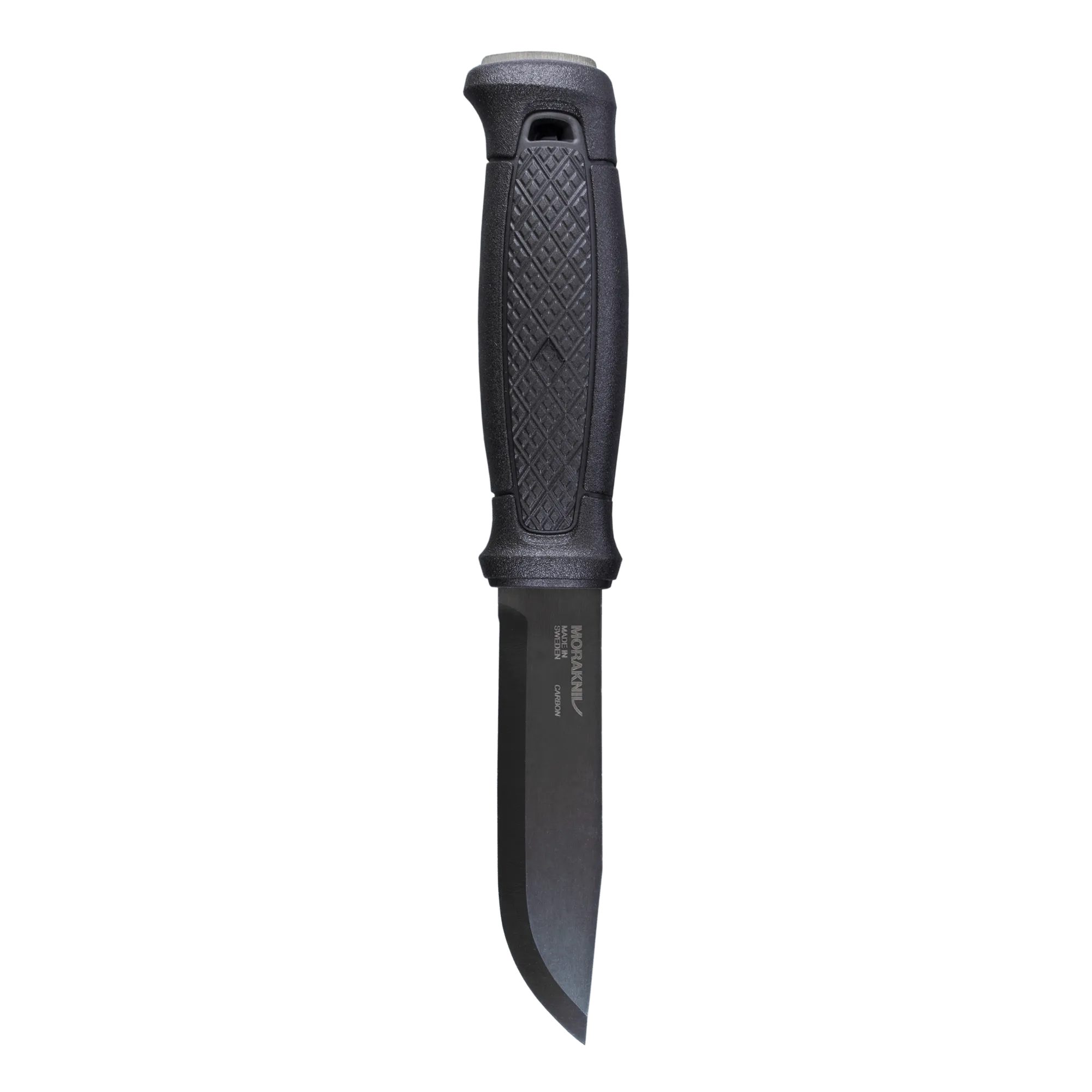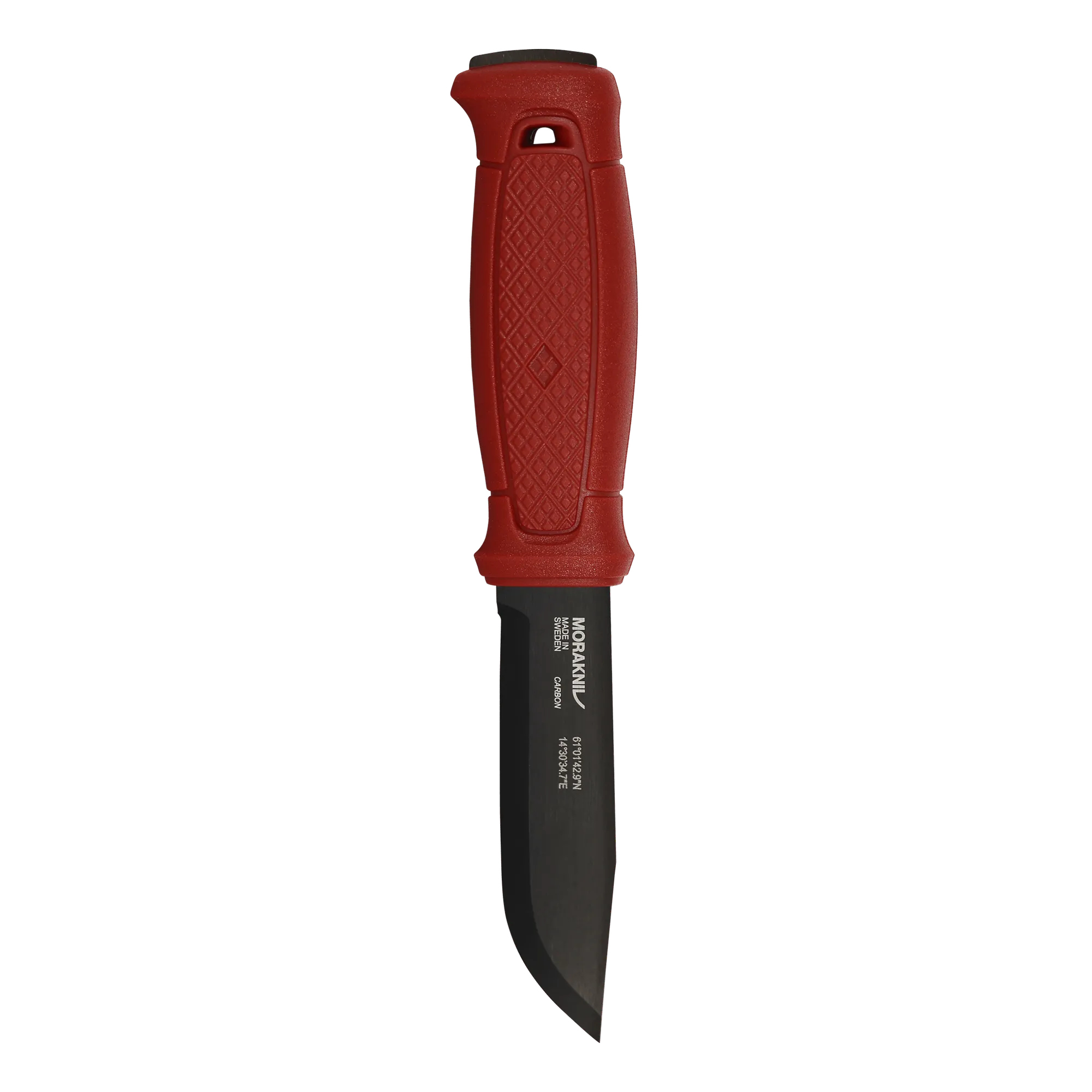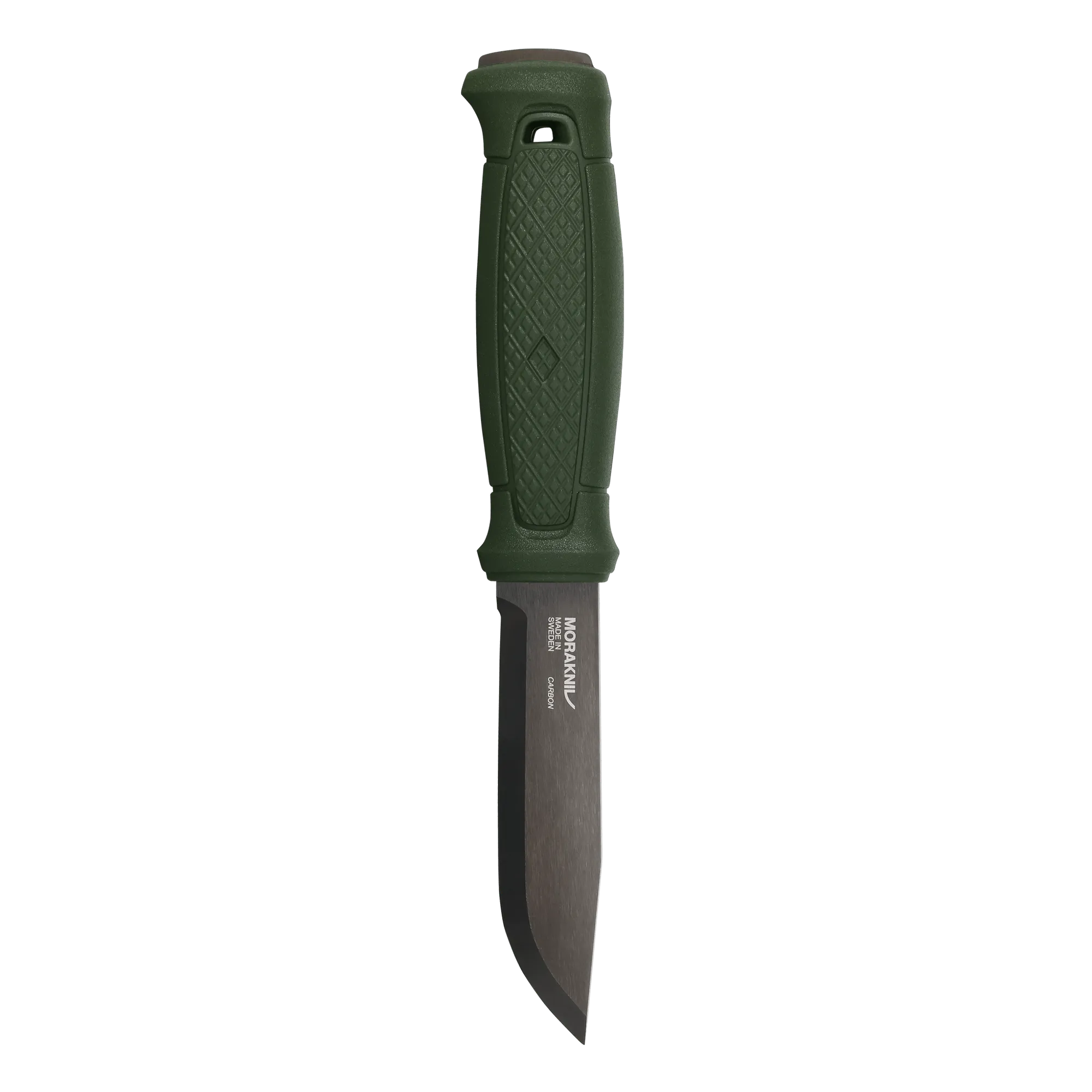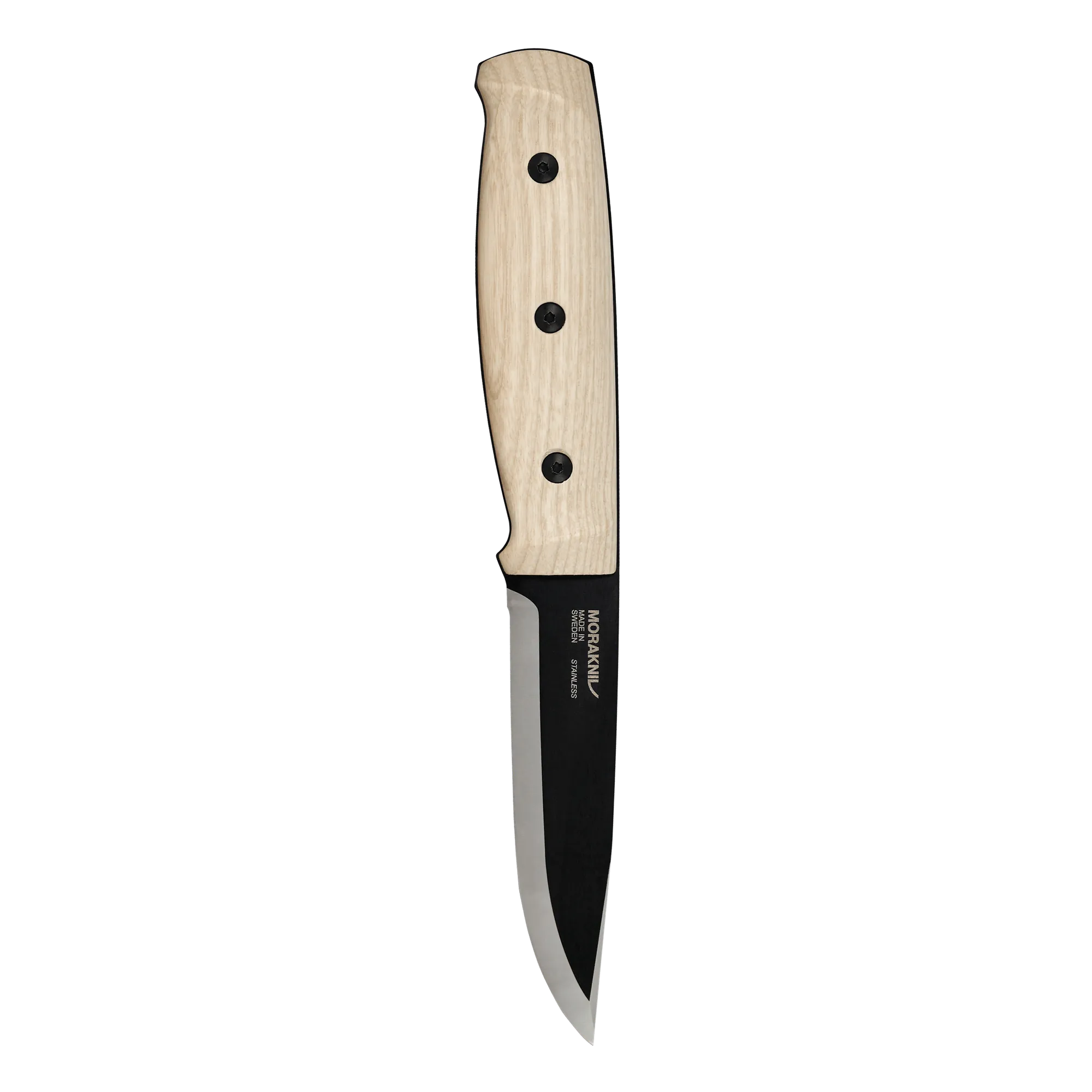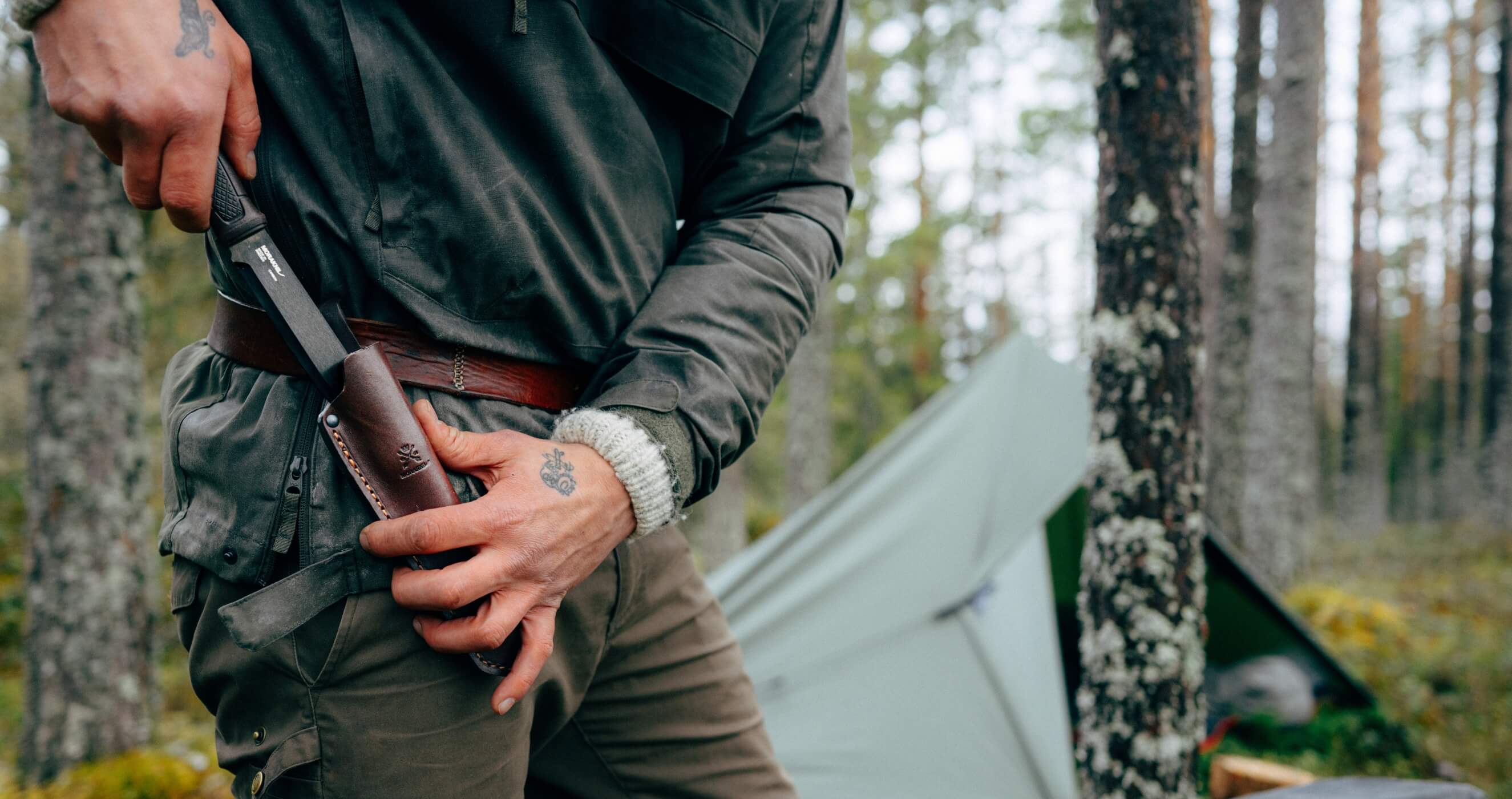
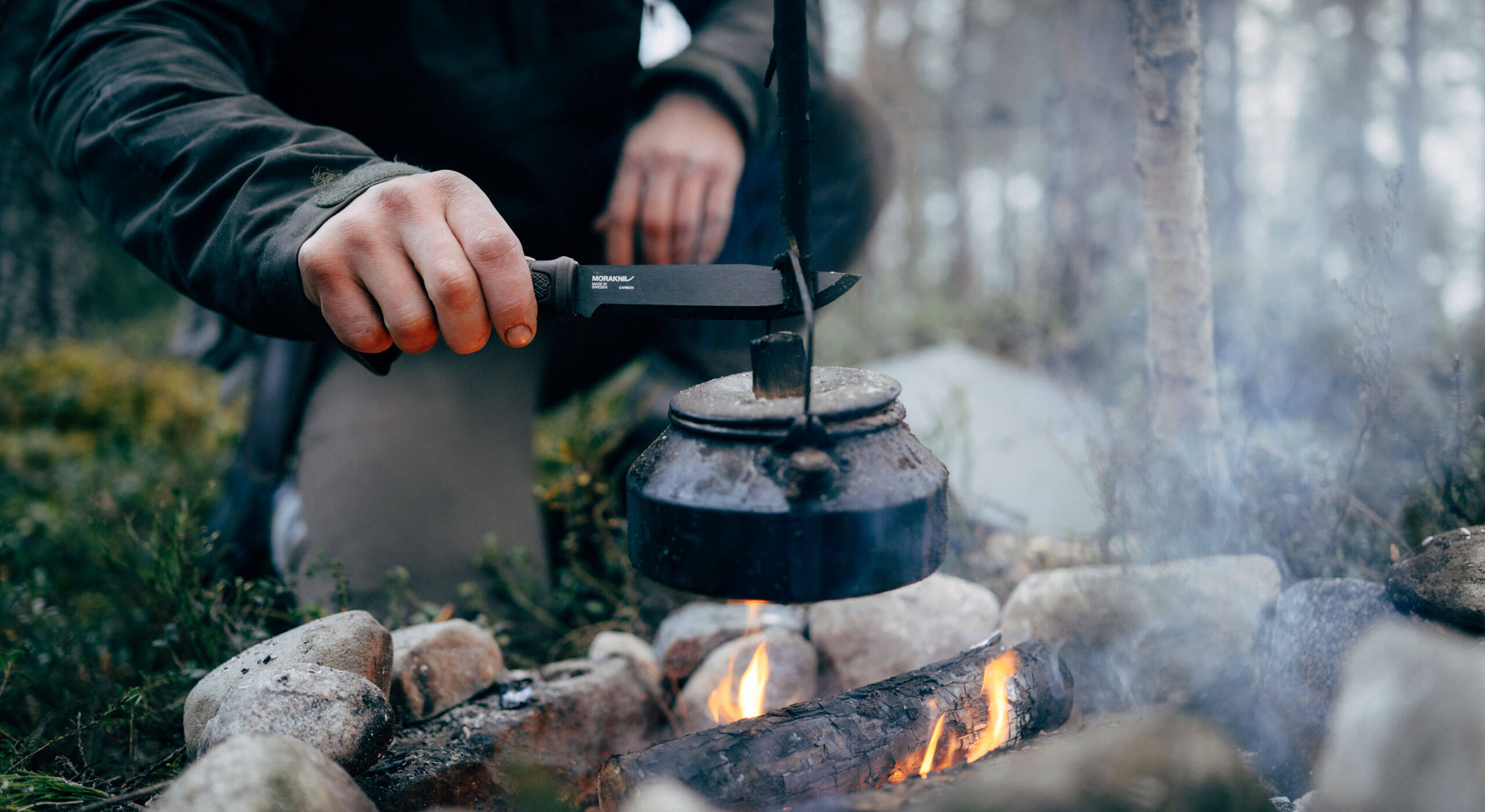
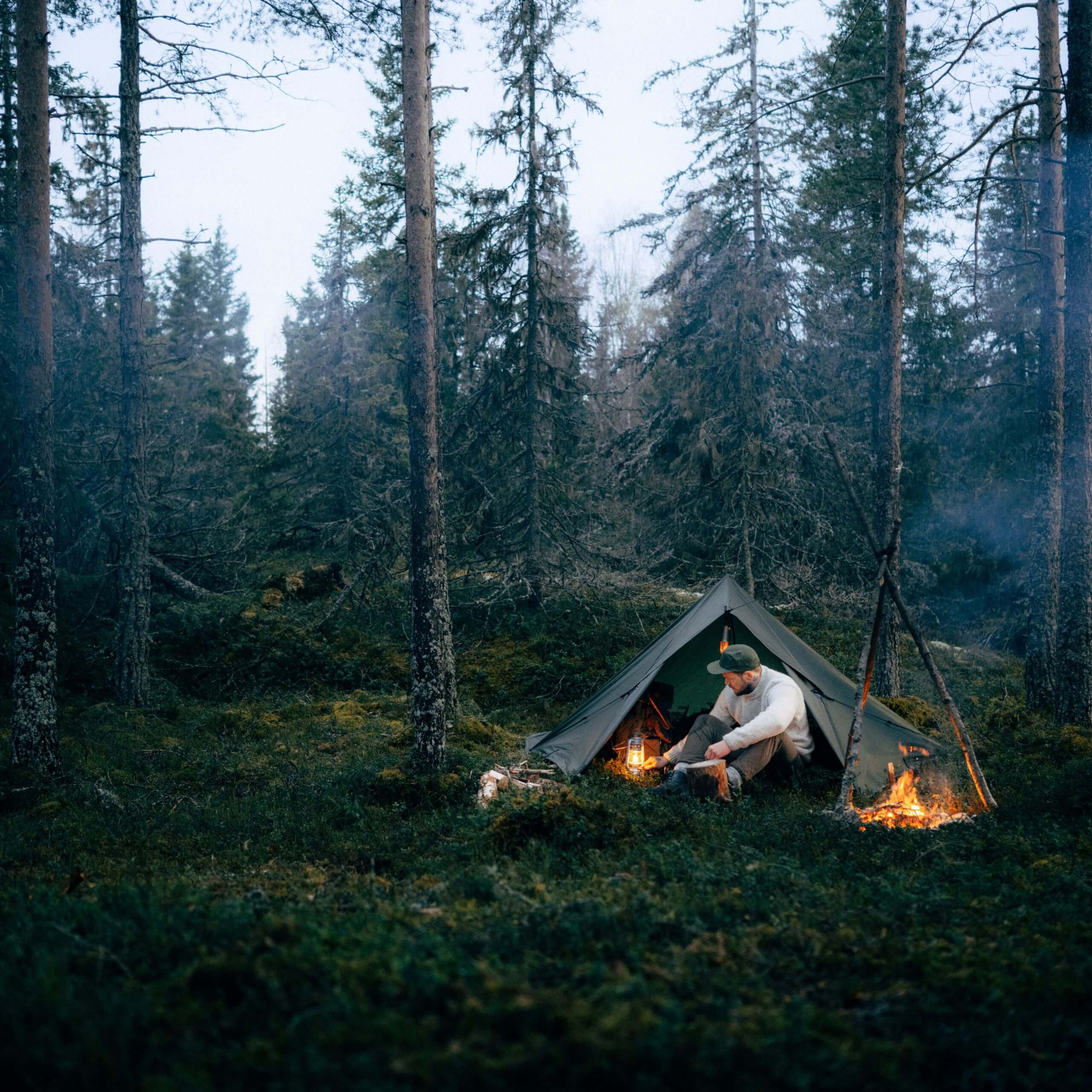
Vad är en överlevnadskniv?
En överlevnadskniv är en kniv utformad för att användas i kritiska situationer där du behöver lita helt på din utrustning. Den används för att göra upp eld, bygga skydd, förbereda mat, jaga eller tälja redskap. Till skillnad från många andra knivar ska en överlevnadskniv tåla extrema påfrestningar, från kyla och väta till hårda stötar och långvarig användning.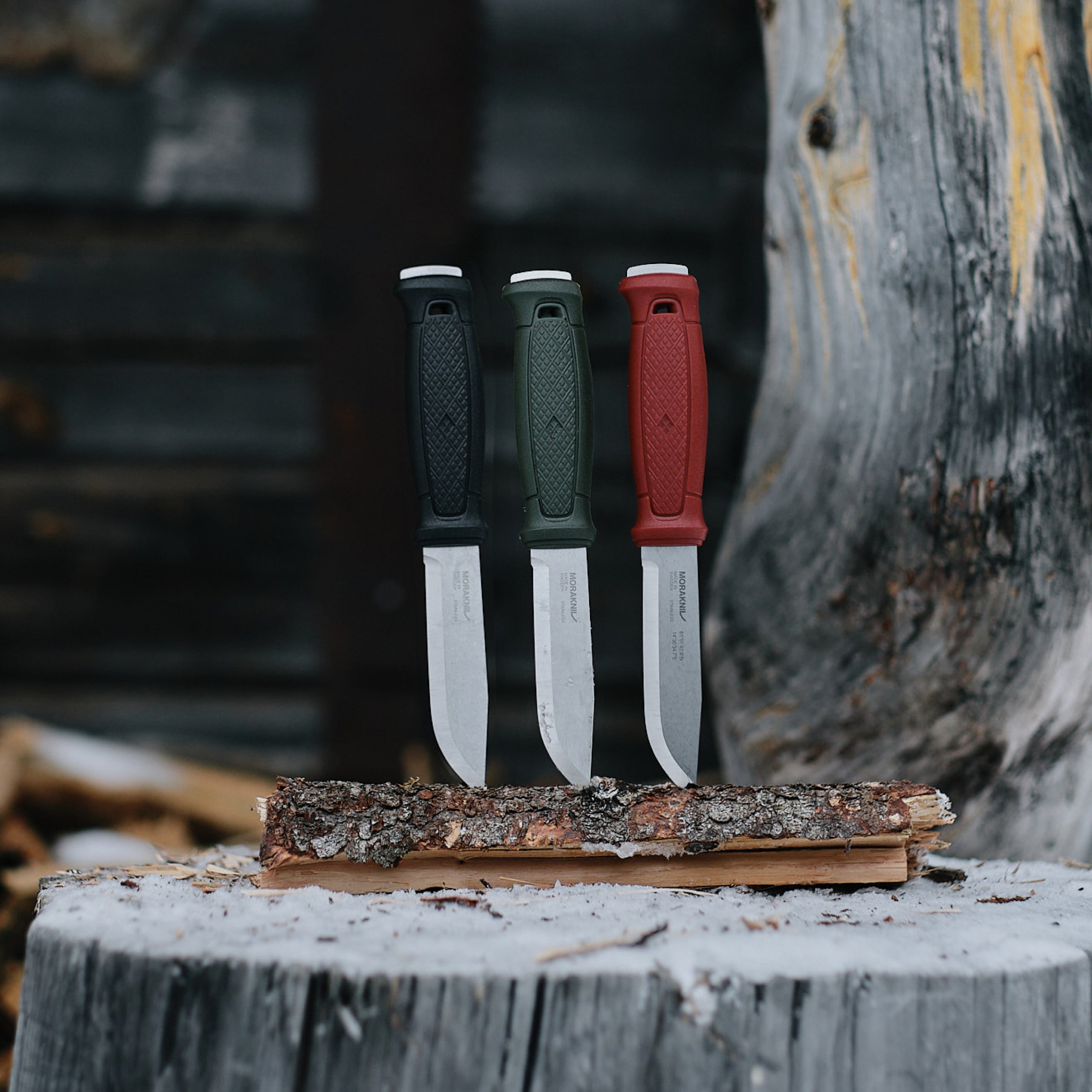
Egenskaper som definierar en bra överlevnadskniv
En överlevnadskniv skiljer sig från andra friluftsknivar genom att ha särskilt utvalda egenskaper. Det här är några av de viktigaste punkterna du bör titta på när du väljer:- Robust fast blad – av rostfritt stål eller kolstål, med bra balans mellan styrka och skärpa
- Fulltånge – ger högre hållbarhet och tål hård användning
- Greppvänligt handtag – säkert även i regn, lera eller kyla
- Kompatibelt med tändstål – många modeller har slipad rygg
- Smart design – gör kniven mångsidig och lätt att bära
- Extra tillbehör – som integrerat tändstål, bryne eller fler monteringsmöjligheter

1 699 SEK
Garberg Grand BlackBlade (C) är en stor vildmarkskniv med fulltångeblad i kolstål med svart DLC-beläggning. Den är framtagen för bushcraft och krävande friluftsäventyr, med ett längre blad som gör den kraftfull nog att fälla mindre träd.
Inkluderade tillbehör: Läderfodral
1 100 SEK
Garberg BlackBlade (C) är en vildmarkskniv med fulltångeblad i kolstål med svart DLC-beläggning. Den är tändstålskompatibel och tålig nog för batonering – perfekt för bushcraft och tuffa friluftsäventyr.
Inkluderade tillbehör: Knivfodral
1 795 SEK
Lok BlackBlade är en slitstark överlevnadskniv med svart PVD-belagt fulltångeblad i svenskt rostfritt stål och stilrent handtag i askträ. Den är tändstålskompatibel och perfekt för friluftsliv, bushcraft och äventyr.
Inkluderade tillbehör: Läderfodral
1 300 SEK
Garberg BlackBlade (C) med Survival Kit är en vildmarkskniv med fulltångeblad i kolstål med svart DLC-beläggning. Den är tändstålskompatibel, tål batonering och har ett överlevnadskit med tändstål, diamantbryne och reflexsnöre för krävande friluftsäventyr.
Inkluderade tillbehör: Bryne, Knivfodral, Tändstål
Vilken typ av situationer ska kniven användas i?
Fundera på var och hur du kommer att använda kniven. Ska du vara ute i fjällen, där temperaturen kan sjunka snabbt och utrustningen måste vara pålitlig? Ska du använda kniven till jakt där precision är viktigt? Eller handlar det om bushcraft – där du behöver en kniv som klarar att klyva ved, tälja, bygga skydd och ibland även laga mat?Om du rör dig i extrema förhållanden (kyla, vind, väta) är det extra viktigt att kniven har bra grepp, rostfritt stål som står emot fukt, och att bladet är starkt nog att tåla hård användning. Tänk också på hur ofta du använder kniven – dagligen i fält eller som del av en krisberedskapsutrustning? Det påverkar vilket val som passar bäst.
Vill du ha fulltånge?
Fulltånge betyder att bladet går hela vägen genom handtaget, vilket ger kniven maximal hållbarhet och robusthet. Om du vill ha en kniv som tål att användas med batoning (att slå kniven genom ved), till att bygga vindskydd, för hård täljning eller annan kraftfull användning, är fulltånge att rekommendera.Garberg och Lok är två modeller med fulltångekonstruktion och är därför utmärkta val för dig som vill ha en överlevnadskniv du kan lita på även i tuffaste tänkbara situationer.
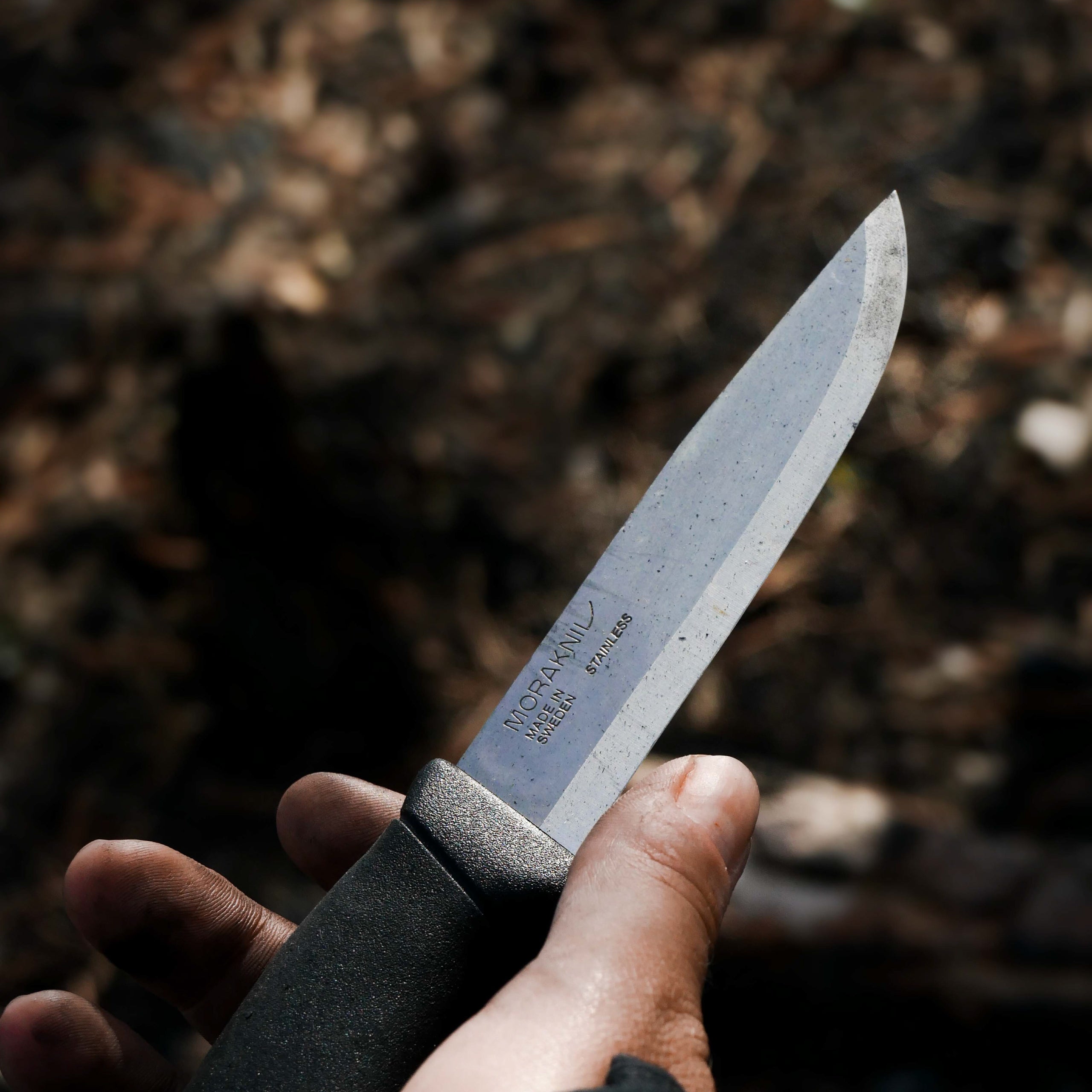
Extra tips inför valet av överlevnadskniv:
- Tänk på underhåll och materialval - Om du ofta vistas i fuktiga miljöer är rostfritt stål ett bra val eftersom det inte rostar lika lätt som kolstål. Rostfritt stål är dessutom enklare att underhålla under längre turer där du inte alltid kan torka eller olja in bladet direkt.
- Greppet är avgörande - Välj en kniv med ett handtag som ger säkert grepp även om du är blöt, kall eller bär handskar. Bushcraft är inte alltid torrt och bekvämt – du vill kunna lita på att kniven inte glider ur handen. Ett bra grepp minskar även risken för olyckor.
- Se över förvaring - Ska du bära kniven i bältet, på bröstet, i ryggsäcken eller i ett fack? Se till att knivens fodral passar dina behov. Vissa modeller, som Garberg, erbjuder MultiMount som ger dig fler alternativ för montering.
- Håll vikten i åtanke - Ju mer robust kniven är, desto tyngre blir den ofta. Om du rör dig snabbt eller långt kan du vilja kompromissa lite mellan vikt och styrka. Lok är ett bra alternativ som ger både stil, funktion och rimlig vikt i ett.
- Tänk långsiktigt - En överlevnadskniv är en investering. Välj en modell som håller i många år – både i material och i design. Det är bättre att köpa en riktigt bra kniv direkt än att behöva byta ut en billigare modell när den sviker.
Behöver du tändstål?
Många överlevnadssituationer börjar eller slutar med att du måste bygga en brasa för värme, ljus, mat eller trygghet. Då är tändstål en oumbärlig del av din utrustning. Välj en kniv som antingen har en slipad rygg för att användas med tändstål, eller en modell där tändstålet ingår direkt.Bushcraft Survival är ett komplett system där både tändstål och diamantbryne är integrerade i fodralet – så du alltid har dem tillgängliga.
Ett annat alternativ är att välja Garberg tillsammans med vårt Survival Kit, som fästs direkt på fodralet och inkluderar tändstål och bryne.
Båda lösningarna gör att du är bättre rustad för att hantera både planerade och oväntade situationer i naturen.
Vad är bäst – rostfritt stål eller kolstål?
Rostfritt stål är mycket populärt för överlevnad eftersom det står emot fukt, regn och snö bättre än kolstål. Det kräver minimalt med underhåll och är därför ett bra val för längre turer, fuktiga miljöer eller om du inte alltid har möjlighet att torka av kniven direkt efter användning. Rostfritt stål håller dessutom skärpan bra och är lätt att underhålla.Kolstål, ger ett extra vasst blad och är ofta uppskattat av användare som prioriterar skärpa och traditionell känsla. För våra BlackBlades ger ytbehandlingen viss rostresistens och minskar blänk – något som kan vara en fördel vid jakt eller i taktiska situationer. Men tänk på att kolstål behöver lite mer omsorg: torka alltid av bladet och olja in det regelbundet för att undvika rost.

